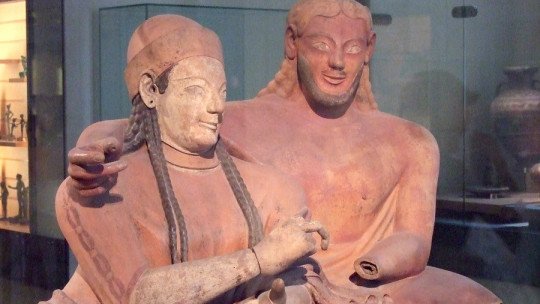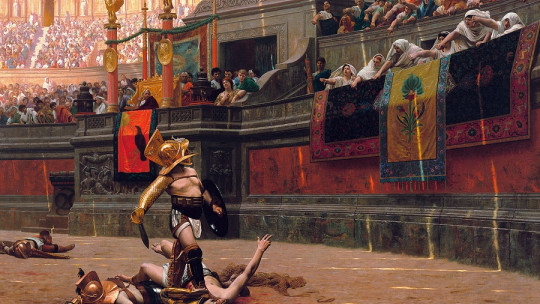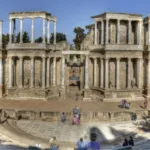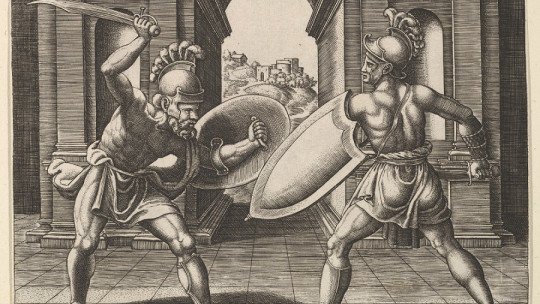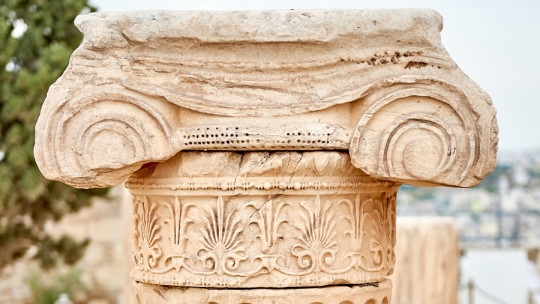In Cerveteri, Italy, are located the remains of ancient Caere, one of the most important cities in the ancient etruscans The name, with probable Semitic roots (with whom the Etruscans had frequent contact) was later modified by the Romans, who began to call the town Caere vetere (Old Caere), to differentiate it from the new Roman urbanization.
In 1836, an excavation team led by General Vincenzo Galassi and the Archpriest of Cerveteri, Alessandro Regolini, found a colossal tomb containing the remains of a very wealthy woman who had been buried, as well as the ashes of a second individual; in this case, a man. The discovery was an important milestone in the study of Etruscan culture, a people as enigmatic as it is fascinating.
Who were the Etruscans? Where did they come from? Will their strange language ever be deciphered? Currently, all these questions are still surrounded by darkness. In today’s article, we try to delve into this mysterious culture that took over central Italy and that was definitively replaced by Rome, which it greatly influenced.
Who were the Etruscans?
Despite the countless investigations that have been done and the various classical sources that tell us about them, the ancient Etruscan civilization remains a mystery. Where they came from? Their language, still hermetic, does not seem to be related to any of the others of the Italian peninsula that existed at that time Rather, it seems to come from a common stock with the ancient languages of Anatolia, which sheds some light on the origin of the Etruscans.
Native or foreign?
If it is true that the language spoken by these ancient Etruscans is related to the languages of Anatolia, it is more than likely that the first Etruscans came from the Near East. Herodotus, the famous Greek historian, maintains that they came from Lydia, in modern-day Turkey, and that a group emigrated to the West and settled in Italy. According to legend, Tarconte, the mythical founder of the Etruscan city of Tarquinia, accompanied them on this exodus.
Other historians share Herodotus’ “foreign” theory. Hellaric of Lesbos relates them to the Pelasgians, a people who inhabited Anatolia during the time of the Trojan War. Finally, there are classical authors who maintain that the Etruscans were, in reality, native to the Italian peninsula.
What is the truth? We do not know. Even now, the Etruscan civilization remains a real mystery to researchers. In part, this is because, unlike most ancient peoples, the language of the Etruscans remains undeciphered. Experts are eager to find an Etruscan “Rosetta stone” that will allow a text from this people to be compared with other languages , as happened with the famous discovery of Champollion, which finally allowed us to know what and how the Egyptians spoke. For the moment, however, that has not been the case.
Of course, several Etruscan texts are known, found in various sites. The alphabet in which they are written is clearly recognizable, as it is the ancient Western Greek alphabet (which testifies, once again, to its intense contact with the Hellenic peoples). However, although the words can be read, their meaning is unknown.
The Etruscan League, the great Italian confederation
Whatever their origin, we already find traces of the first Etruscans who settled in Italy in the 12th century BC. They lived in simple but fortified towns, with wooden homes, and they exploited the numerous mines that were scattered throughout the center of the peninsula since ancient times.
In fact, the rise of this town came through the exploitation of copper, lead, iron and tin, with which they manufactured precious objects that later served as luxury products with which to trade. Thus, little by little, a powerful elite was established in the Etruscan cities, which amassed great wealth and held the reins of politics, both internal and external.
How was this fascinating civilization organized? We know that there were a series of strong and independent cities that were linked together by a kind of confederation. Some of the most important were Tarquinia and the already mentioned Caere (Cerveteri), where This aristocracy left important tombs and burial mounds with sumptuous grave goods which testify to the enormous wealth they accumulated.
A banquet in honor of the dead
We have extracted most of the information we know about this civilization from its rituals and funerary art. From the spectacular funerary mounds of the first stage to the tombs inspired by the Hellenic culture of recent centuries; The Etruscan people were, without a doubt, a culture dedicated to religion and closely linked to their dead.
We know that the preparation of the rites related to death was complex and sophisticated, and that it included ostentatious banquets in honor of the deceased, which took place in the tombs themselves, in chambers reserved for this. For example, in the aforementioned tomb of Regolini-Galassi, in the Sorbo Necropolis (Cerveteri), the mound has a diameter of 48 m., and a long dromos (antechamber) led to the mortuary chamber, where the body of Larthia, an Etruscan princess.
We know from the inscriptions found on one of the pateras of the funerary trousseau that the woman belonged to the Velthus, a rich aristocratic gens in the area. In accordance with the status of the deceased, the main chamber that houses the body was full of treasures. Larthia’s own body was found covered in gold sheets and profuse jewels, which attest to the refined goldsmithing art of the Etruscans, with a clear oriental influence. In the two adjoining chambers, evidence has been found that, after the burial ritual (and before sealing the tomb), the traditional funeral banquet was held.
After the banquet, the mortuary chamber was sealed, and a partition was placed with a small window through which the riches that accompanied the deceased to the afterlife could be observed. As a curiosity, among the objects of Larthia’s trousseau were some statuettes that represented the mourners at her funeral, with the possible objective of mourning the princess for all eternity.
In the funeral rites of the ancient Etruscans, crying was mixed with celebration The aforementioned mourners were present during the candle of the body (which was anointed with perfume and oils and left in the house for a few days to be honored and dismissed) and during the ceremony, but, at the same time, the most beautiful and refined music and spectacular banquets were held in honor of the dead.
Classical influences
The original stratum of Etruscan culture is obscured by the enormous influence it received from its Hellenic neighbors and its Roman conquerors, although this influence was absolutely bidirectional. The last Roman kings, for example, were of Etruscan origin and we can glimpse constant cultural exchanges between both peoples.
In one of the areas where the Hellenic influence is most clearly shown is in art. The Etruscan sculptures of the 7th and 6th centuries BC rescue the typology of Greek statuary of the time: almond-shaped eyes, geometrically resolved hair and that enigmatic smile that has been traditionally called “Etruscan smile” (and that we also find in the kouroi and the korai of the Greek archaic period).
A beautiful example is the Sarcophagus of the Spouses, from the Cerveteri Necropolis. On top of a luxurious Greek divan (the kliné), a man and a woman lie and talk animatedly. She pours a few drops of perfume into his hand, while her husband leans on a wineskin. We have here two of the characteristic and indispensable elements of Etruscan banquets: perfume and wine, a faithful reflection that hedonism and death were not at odds in this culture
Another area in which a clear Hellenic (and, later, Roman) influence can be seen is in the pantheon. Although the Etruscans had their own (which basically consisted of superior forces, called dii involuti, and minor gods who were responsible for delivering their messages to humans (the dii consents), with the passing of the centuries these minor gods acquired characteristics of the Greek gods and, in addition, began to be represented plastically with their appearance.
Thus, the main god of the Etruscan dii consents was Tinia, later identified with Zeus; Aplu, who was of Akkadian origin, was assimilated with Apollo, and Menrva (the root of the Roman Minerva) was identified with Athena. The priests had a very important role, as they were in charge of interpreting the signs of these gods. For example, Tinia-Zeus could launch three types of lightning, which the priestly caste had to understand properly, since each of them had a meaning.
The end of Etruscan culture
After the predominance of Tarquinia in the 7th century BC, in the following century it was the turn of Caere, which exercised preeminence over the Etruscan confederation for approximately a century. Then cities like Vulci (where there were notable bronze and stone sculpture workshops) and Veii, where terracotta sculpture triumphs, take over.
Although at first it was the Etruscan cities that exercised dominance over the still weak Rome, at the end of the 5th century BC the tables had turned. Since then, It will be the Romans who begin their expansion throughout the Italian peninsula , and they will subdue the Sabines, Umbrians, Ligurians and, of course, the Etruscans. However, they will also assimilate some of their cultures, and many elements of these ancient people will survive through Roman civilization.

